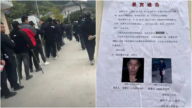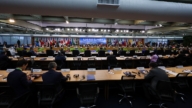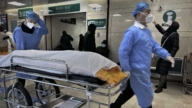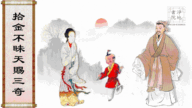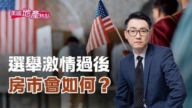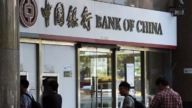【新唐人2012年1月9日讯】中共总理温家宝在1月3号对商界发表新年祝词时警告说:“今年第一季度可能会相当的困难”。如今,诸多现象显示:中共政权依赖生存和执政依据的所谓“经济建树” 已经开始幻灭,而中共的安全网也在寸寸断裂。
去年10月,香港中文大学教授郎咸平在沈阳演讲时,一语惊人的指出,中国大陆的经济实际上已经破产,只是账面上看不出来。郎咸平说,中国的采购经理指数显示,早在7月已经进入经济萧条,但是中共所有的政策,掩盖了病入膏肓的真实情况。
郎咸平在沈阳演讲时说,中国70%的GDP其实是靠基础设施的建设,但这些实际上是没有经济效益的﹔而中国真正的经济支柱制造业如今却出现了危机。他指出,在江浙地区许多产业的开工率只有30%到60%。
由于产业萎靡,中国的制造业面临着倒闭潮和罢工潮。自2008年以来,东莞、珠三角、浙江、温州、长江三角等地的企业纷纷倒闭。单单在温州,2010年4月到10月间,就有80多名负债累累的企业主因为还不清贷款而逃走甚至自杀。
美国纽约城市大学经济学教授陈志飞指出,中国的民间企业经营维艰,是中共政策优惠国营企业,歧视民间中小企业的恶果。
陈志飞:“在经济(2008年)萧条之后,(中共)大力的扶持国营企业,虽然国营企业大部分是亏损的、破产的,他们还是把钱投到这些行业,来扶持他自己的、私有的、垄断的党产。而且对广大的中小型企业采取打压、歧视和在财政资助上各种限制的政策。”
2012年的第一周,中国各地已经掀起了此起彼伏的罢工浪潮,四川、广西、江苏三地甚至一天发生三起大型千人以上罢工活动。去年和前年,中国大陆的大型罢工运动遍布了广东、北京、上海、江苏、重庆、山东、山西、甘肃、河南、湖北等多个省份,几乎是有工厂的地方就有罢工。
陈志飞说,中共长期以来以廉价劳动力吸引外资、扮演的是不光彩的角色。
陈志飞:“中国政府和当局、中共制度在其中扮演的(角色)是非常不光彩的,实际上是把中国人民往火坑里推,来充当垄断资本廉价劳动力的角色,是恶老板的这么一个角色。”
如今这种压迫政策反弹,物价飞涨,劳动队伍开始要求工资上涨而演变成罢工潮,这个巨变使中国出现了外资制造企业撤退潮。摩根士丹利的数据显示,过去10年中国劳工薪资每年成长将近12%。由于成本增加迅速,许多企业已经开始撤出中国。
除了面对制造业倒闭潮、罢工潮,以及外企撤退潮的“三潮”困境,中国的经济还面对三个炸弹:股市、房市和信贷泡沫。
去年12月13号,上海沪指收报2248.59点,和2001年沪市大盘的最高点2245点相差无几,引发网民怨叹:“中国股市10年涨幅为零”,突显出中国股市泡沫的泄气。
另一方面,中国的房市却在10年里涨了10倍,到了中产阶级买不起的地步。然而这个畸形的泡沫也已经开始爆破。据中共国家统计局公布的数据,2010年9月份,70个主要城市中有46个房价停止上涨或开始下滑。
而股市、房市、民间企业经营维艰及倒闭潮,最终都和中国银行的贷款有关。另外,中国地方政府的高欠债率也将加速贷款泡沫的爆破,大陆媒体报导,截至2011年5月,单单北京的土地储备贷款就超出2500亿元,处于破产边缘,而很多地方也都面临同样状况。
去年年底,中共政府宣布在全国范围内31个省和数百直辖市的审计结果,发现地方政府现负有价值1万6千亿美元的贷款。且高达20%的部分可能要作为坏账被注销。许多对冲基金已经开始做空中国。
中共的经济危机已经成为定局。本来,在危机时,美国、欧洲和日本三大经济体都不会袖手旁观,以免让中国的危机拖垮自己国家的经济。但如今这三个国家都处在自身难保的危机当中,恐怕在中国经济硬着陆时谁也爱莫能助。
如果说“三股潮流”、“三个泡沫”是中共作茧自缚,那在中共发生经济危机的前夕,先让所有外援全部折翼,恐怕是上苍的布局了。
新唐人记者常春、吴惟、王明宇采访报导。
China’s Economy Crisis Finality
On January 3, in New Year’s message to business, Premier
Wen Jiabao warned: “The first quarter can be quite difficult."
Many of the so-called “economic contribution" phenomena,
which the Chinese Communist Party (CCP) is dependent on, have begun to vanish.
The CCP’s safety net begins to fracture too.
Last October, Prof. Lang Xianping at the Chinese University
of Hong Kong, talked in Shenyang about the economy.
He pointed out during his speech, that China’s economy
is virtually bankrupt, but this cannot go in the official books.
Prof. Lang said that China’s Purchasing Manager Index shows,
that China has entered recession as early as July 2011.
However, all CCP’s policies are such that they can cover up
the real ailing situation.
Prof. Lang pointed out during his speech in Shenyang,
that 70% of China’s GDP is from infrastructure development.
However, these are not cost-effective. Plus, the real pillar
of China’s economy, manufacturing, is now in a crisis too.
He pointed out that many industries in Jiangsu and Zhejiang,
have only 30% to 60% operating rate.
As the industry is sluggish, China’s manufacturing industry
is facing closures and strikes.
Since 2008, in Dongguan, the Pearl River Delta, Wenzhou,
Yangtze River Delta, etc., many businesses have closed down.
In Wenzhou alone, from April to October, 2010, over 80
heavily indebted businessmen fled or committed suicides.
Chen Zhifei, economics’ professor at New York City Univ.,
pointed out that China’s private businesses have a hard time.
Prof. Chen thinks this is due to CCP’s preferential policies
to state-owned enterprises and discrimination of private SMEs.
Prof. Chen: “During the economy depression since 2008,
(CCP) vigorously supported the state-owned enterprises.
Although most of them were in deficit or bankruptcy state,
they (CCP) still put money into these industries, as to support their own, private and monopoly party assets.
Regarding the majority of the small and medium enterprises,
the CCP suppressed them, and has policies of discrimination and restrictions on financial assistance."
In the first week of 2012, another round of the strikes’ wave
has launched in China.
Sichuan, Guangxi, and Jiangsu had three strikes a day,
each with thousands of people participating.
Last year and the year before, large-scale strikes took place
in many provinces and cities.
These include Guangdong, Beijing, Shanghai, Jiangsu, Gansu,
Chongqing, etc., or wherever there was a plant, was a strike.
Prof. Chen said, for a long time CCP is using cheap labor
to attract foreign investments, playing a disgraceful role.
Prof. Chen: “The Chinese government and the authorities,
and the CCP system as a whole, play a very shameful role.
They are pushing the Chinese people into the fire pit, using
monopolized capital and cheap labor, acting as an evil boss."
Now oppression policies rebound, and prices rise fast,
the labor force demands higher wages and went on strikes.
The changes cause foreign manufacturers to retreat.
Morgan Stanley data shows that over the past 10 years,
Chinese workers’ salary grew nearly 12% per year.
As the costs increase rapidly, many companies have begun
to withdraw from China.
In addition to the “three waves" dilemma: manufacturing
closures, strikes, and foreign companies withdrawal,
China’s economy also faces the burst of the three bubbles:
the stock market, the housing and the credit loans.
On December 13, 2011, Shanghai stock index closed at 2248
points, quite close to its highest point of 2245 in 2001.
Netizens complain: “China’s stock market gained zero
in the past 10 years."
This indicates the deflation of China’s stock market bubble.
On the other hand, the housing market has gone up 10 times
for 10 years, so even the middle class cannot afford houses.
However, this deformed bubble has started bursting too.
Chinese National Bureau of Statistics data from September
2010 shows, that housing prices fell in 46 out of 70 top cities.
For the stock market, housing market, and private enterprises
was hard to survive and are closing down, all ultimately related to the loans of Bank of China. In addition, China’s high local government’ debt ratio
will also accelerate the bursting of the credit loans bubble.
Mainland media reported, up to May 2011, land reserve loans
in Beijing exceeded RMB 250 billion,
being on the brink of bankruptcy,
with many cities facing the same situation.
At the end of last year, the government announced its audit
findings from 31 provinces and hundreds of municipalities.
The audit showed that local governments’ loans
amount to US$1.6 trillion.
And up to 20% may have to be written off as bad debts.
Many hedge funds have begun to shrink in China too.
CCP’s economic crisis has become a foregone conclusion.
Originally, in times of crisis, the US, Europe and Japan,
would have helped China, as to avoid their economic collapse.
However, now they are in crises themselves, and might be
helpless when China’s economy faces the hard landing.
If the ‘three trends’ and ‘three bubbles’ are a CCP’s cocoon,
doesn’t cutting all foreign aid options look like Heaven’s hand?
NTD reporters Chang Chun, Wu Wei and Wang Mingyu







